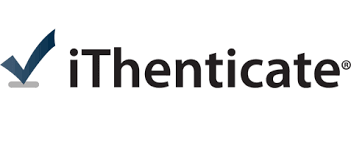Author Guidelines
Manuscript Submission Overview
The Journal of Evidence-Based Community Health publishes types of articles:
• Original research articles: original manuscripts (maximum 7,500 words) that contain new research findings in any field of knowledge.
Microsoft Word template
To ensure an impeccable presentation, be sure to use the Microsoft Word template we have provided! Remember to format your manuscript according to the template instructions before submitting it. This will guarantee that your work is received in the most favorable way possible, and will speed up the publication process of your article in our journal.
Click here to download
Special Issues
The Journal of Evidence-Based Community Health encourages the publication of special issues. The special issue is dedicated to a single, well-defined theme and should contain between twenty and forty articles. The proposal for a special issue to be sent to the Editor-in-Chief should contain the following: The title of the special issue, a brief description of the reason for the special issue, and the deadline for submission of the authors. All papers will be submitted to the reviewers' review process normally, which includes the possibility of rejection. For more details on preparing and publishing special issues, please contact the editor-in-chief.
Text Editing
• Languages: only English;
• Word processor: Microsoft Word for Windows;
• Text: Times New Roman, size 12. There should be no words in bold text;
• Spacing: 1.5 throughout the text;
• Page: A4 paper, portrait orientation, 2.5 cm top and bottom margins, and 3.0 cm left and right margins with numbered lines and pages;
• Scientific style: Quantities are expressed in SI (Sistema Internacional), and scientific terminology must follow the international conventions of each area concerned; Genus and species names must be italicized.
Structure of the article
• Title: Only the first letter of the first word must be capitalized.
• Abstract: 300 words maximum;
• Keywords: At least three and not more than six, but not included in the title;
• Introduction: The Introduction should indicate the purpose of the research and briefly review the literature.
• Material and Methods: This section should follow the Introduction and provide sufficient information to allow repetition of the experimental work.
• Results: This section should describe the outcome of the study. Data should be presented as concisely as possible and, if any, in the form of tables and figures, although very large tables should be avoided.
• Discussion: The discussion should be an interpretation of the results and their meaning with reference to other authors' work.
Note: Results may be accompanied by discussion in the same section or separately.
• Acknowledgment: (optional) These should be as soon as possible. Any awards that require recognition must be mentioned.
• Declaration of interest: All authors should disclose any personal and/or financial relationships with other people or organizations that may improperly influence their paper. A conflict of interest statement should be provided in the manuscript file immediately before the References section. Case there are no Conflicts of Interest, so report "The authors declare no conflicts of interest".
• Funding: The names of the funding organizations should be written in full. If there was no financial aid, it should be reported that "This research did not receive any financial support".
• References: The reference list should include only works cited in the text and published or accepted for publication. Personal communications and unpublished works should be mentioned only in the text. Referral list entries must be alphabetized by the first author's surnames of each article.
Citations:
The citation formatting in the Multidisciplinary Science Journal follows the American Psychological Association (APA) style with little modification.
Examples of citations:
Single author: The author's last name should always be with the first letter in uppercase and the rest in lowercase, whether it appears inside or outside parentheses. Examples: In the text: (Smith, 2019) or Smith (2019).
Two authors: When referencing an article authored by two individuals, include both authors' last names followed by the publication date each time you mention it in the text. Examples: In the text: Dantas and Souza-Junior (2023) or (Dantas & Souza-Junior, 2003).
Three or more authors: In cases where a work has three or more authors, only the last name of the first author should be used, followed by the Latin expression "et al.", and then the publication date. Examples: In the text: Ahmed et al. (2023) or (Ahmed et al., 2023).
References:
The reference formatting in the Multidisciplinary Science Journal follows the American Psychological Association (APA) style with little modification.
The order of the elements that make up a scientific article reference follows:
Authors: Authors' names are listed by surname followed by first initials. Surnames are separated by commas, and the last surname is followed by a comma and an "&" before the last author.
Year: The year of publication appears in parentheses immediately after the list of authors.
Article title: The article title is in lowercase except for the first word and any proper nouns. It is followed by a period.
Journal title: The title of the journal (or the work's title, in the case of books) is written in italics (only the first letter of each word in the journal is capitalized). It is followed by a comma.
Journal volume and issue: The journal volume is indicated in italics, followed by the number in parentheses (issue number, if any), followed by a comma.
Pages: The pages on which the article appears are indicated after the comma in the starting and ending pages format, separated by a hyphen.
Examples of references:
Original papers:
Single author:
Smith, J. A. (2019). Effects of sleep deprivation on cognitive performance. Journal of Sleep Research, 8(2), 123-135. https://doi.org/10.124673/josr.123345
Two authors:
Johnson, M. P., & Lee, K. S. (2020). Impact of climate change on biodiversity. Environmental Science & Technology, 42(7), 2652-2660. https://doi.org/10.1021/es2334567
Three or more authors:
Brown, P. R., Johnson, M. A., Anderson, S. L., Smith, K. L., & Wilson, R. T. (2018). Human-robot interaction: An applied research. Robotics and Autonomous Systems, 63(10), 12-23. https://doi.org/10.1014/j.robot.2015.01.013
Books:
Johnson, M. P. (2017). Introduction to Artificial Intelligence. Springer.
Book chapter:
Doe, J. (2018). The Role of Technology in Education. In M. Johnson & K. Lee (Eds.), Advances in Educational Psychology (pp. 45-60). Academic Press.
Theses, dissertations and monographs:
Johnson, M. P. (2022). Deep Learning Approaches for Natural Language Processing (Tese de doutorado). Universidade de Stanford, Stanford, CA.
Conferences:
Anderson, S. L. (2018). Cognitive effects of virtual reality exposure therapy in anxiety disorders. In Proceedings of the International Conference on Virtual Reality (p. 45). Los Angeles, CA. https://doi.org/10.11309/ICVR.2019.8743654
Online Documents/Web Pages:
Smith, J. (2022). How to feed growing cattle. Green Garden. https://www.example.com/feed-growing-cattle. Accessed on October 20, 2023.
Laws and regulations:
Centers for Medicare & Medicaid Services (CMS), HHS (2006). Medicare program; revisions to payment policies, five-year review of work relative value units, changes to the practice expense methodology under the physician fee schedule, and other changes to payment under part B; revisions to the payment policies of ambulance services under the fee schedule for ambulance services; and ambulance inflation factor update for CY 2007. Final rule with comment period. Federal register, 71(231), 69623–70251.
• Tables
• All tables must be numbered with Arabic numerals.
• Tables should be cited in the text in numerical order.
• For each table, provide a caption (title) at the top.
• Identify any previously published material by making the original source reference the bottom of the table (footnote).
• Table footnotes should be indicated by superscript lowercase letters (or asterisks for significance values and other statistical data) and included in the table's body.
• Figures
• Provide the figures electronically.
• TIFF format offers higher-quality graphics.
• Name your image files (graphics or photos) "Picture" and their number, for example, Figure 1.
• The caption (title) should appear at the bottom of the picture.
Note: Tables and figures should be provided sequentially at the end of the manuscript, i.e., after the References section.





